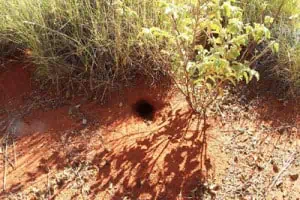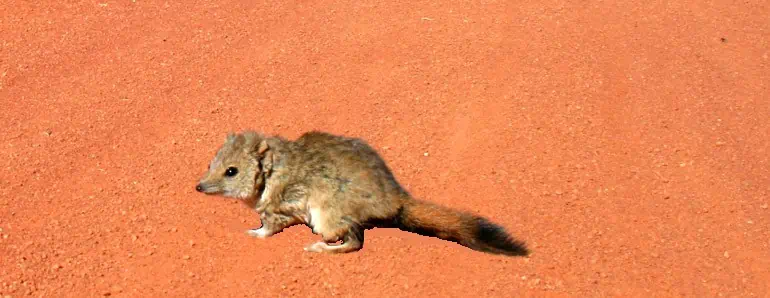Mulgara

When I was a child, they were considered a single species, but now they are categorised into two species in the genus Dasycercus. The Crest-tailed Mulgara (D. cristicauda) has a crested tail, three upper premolars, and eight nipples in its pouch. The Brush-tailed Mulgara (D. blythi) differs a little as it has a non-crested tail, two upper premolars, and six nipples. They have large eyes with sparsely furred, small thin ears.
The fur on top of the body and tail is a reddish brown or gingery, becoming whiter underneath. It is bigger than a mouse and has a compact, stocky body with a head slightly in bigger proportion to the rest of the body.
I’ve included below a burrow entrance. They dig complex systems (with 2-entries) on the flats between dunes, often in spinifex grasslands. They will also use the burrows of other animals, and these underground homes will have a grass-lined nest chamber for their young.

The presence of Mulgara in spinifex grassland generally means the environment is healthy. It indicates that a healthy fire regime exists and that grazing is sustainable. Importantly, a sign that predator numbers are under control. These tiny marsupials are vulnerable to predation by cats and foxes. More information about its status, distribution and life cycle is available from the Department of Environment website.

